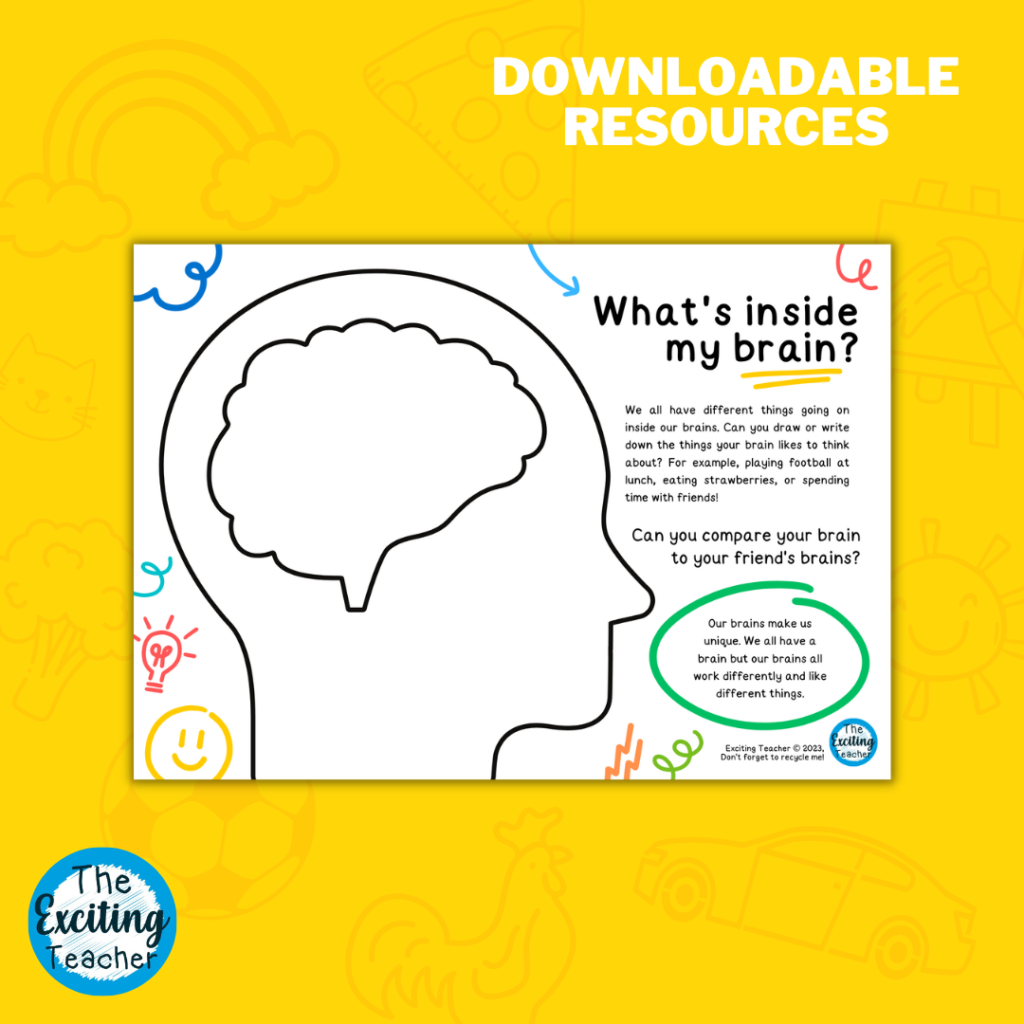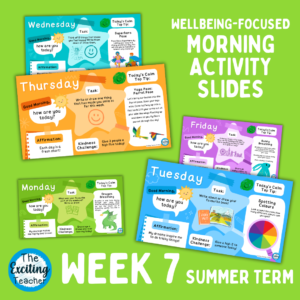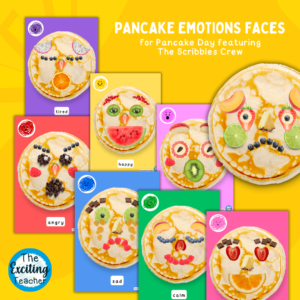'What's inside my brain?' Understanding Differences in Others

‘What’s inside my brain?’ has been designed to help children to understand that we all think about different things. Our brains are unique to us as individuals. An activity to support with exploring similarities and differences.
We all have different things going on inside our brains. Can you draw or write down the things your brain likes to think about? For example, playing football at lunch, eating strawberries, or spending time with friends! Can you compare your brain to your friend’s brains? Our brains make us unique. We all have a brain but our brains all work differently and like different things.
How could this resource be used?
- To support with exploring similarities and differences.
- To help to teach the idea that we all think about different things and in different ways.
- To understand that we all have different strengths.
Relevant Curriculum Links:
England PSHE – Which statutory PSHE curriculum* objectives does this resource fall into? *in line with the PSHE Association 2021 Statutory Guidance.
- KS1: H15. to recognise that not everyone feels the same at the same time, or feels the same about the same things.
- KS1: H17. about things that help people feel good (e.g. playing outside, doing things they enjoy, spending time with family, getting enough sleep).
- KS1: H21. to recognise what makes them special.
- KS1: H22. to recognise the ways in which we are all unique.
- KS1: H23. to identify what they are good at, what they like and dislike.
- KS1: R23. to recognise the ways in which they are the same and different to others.
- KS2: H16. about strategies and behaviours that support mental health — including how good quality sleep, physical exercise/time outdoors, being involved in community groups, doing things for others, clubs, and activities, hobbies and spending time with family and friends can support mental health and wellbeing.
- KS2: H21 – to recognise warning signs about mental health and wellbeing and how to seek support for themselves and others.
- KS2: H25. about personal identity; what contributes to who we are (e.g. ethnicity, family, gender, faith, culture, hobbies, likes/dislikes).
- KS2: H27. to recognise their individuality and personal qualities.
- KS2: H28. to identify personal strengths, skills, achievements and interests and how these contribute to a sense of self-worth.
- KS2: R32. about respecting the differences and similarities between people and recognising what they have in common with others e.g. physically, in personality or background.
Scottish Health and Wellbeing Curriculum Outcome(s):
- Mental and Emotional Wellbeing:
- I understand that my feelings and reactions can change depending upon what is happening within and around me. This helps me to understand my own behaviour and the way others behave. HWB 0-04a / HWB 1-04a / HWB 2-04a / HWB 3-04a / HWB 4-04a.
- I know that we all experience a variety of thoughts and emotions that affect how we feel and behave and I am learning ways of managing them. HWB 0-02a / HWB 1-02a / HWB 2-02a / HWB 3-02a / HWB 4-02a.
- Social Wellbeing:
- I recognise that each individual has a unique blend of abilities and needs. I contribute to making my school community one which values individuals equally and is a welcoming place for all. HWB 0-10a / HWB 1-10a / HWB 2-10a / HWB 3-10a / HWB 4-10a.
More amazing resources you might like:
- All
- Breathing Techniques
- Emotional Literacy
- Emotional Regulation
- Flashcards
- Grounding Techniques
- Keeping Safe
- Media Literacy & Digital Resilience
- Mindfulness
- Morning Slides
- Physical Health
- Self-Esteem

Cat Big Emotions Flashcards (National Cat Day Themed Resources)

Hot Chocolate Breathing: Mindfulness and Grounding Technique

Morning Activity Slides – Week 7 (Summer Term): Emotional Literacy, Wellbeing and Mindfulness Focused

Spot the Feelings: Social Stories about BIG Emotions

Pancake Emotions Faces (featuring The Scribbles Crew) (Pancake Day themed)

‘Who can I talk?’: Online Internet Safety

‘What works for me?’ Sorting Similarities and Differences

‘What would I do?’: The Internet and Mental Health

Circle Time Sessions: ‘Decorating for Christmas’ (Lesson Plan) – Christmas Edition

‘Vaccine or no vaccine?’ KS1 Sorting Activity
Share this resource:
Request a Resource
Want to request or suggest a resource? Pop us a message below and we will see what we can do. We are not able to respond directly to all requests but be rest assured, we are reading them and constantly updating the resource bank accordingly to all your fabulous ideas!
